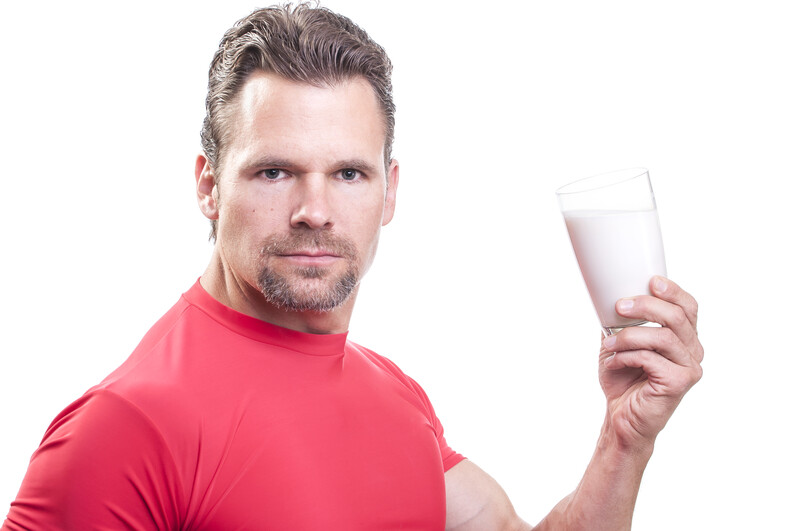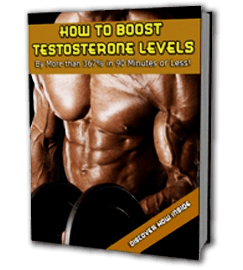(Article Medically Reviewed By Dr. Zach Hyde)
Dairy Products and Hormone Levels in Men
Dairy hasn’t been getting a particularly fair shake as of late.
Despite the fact that cow’s milk and its various iterations have kept millions of people alive through countless food shortages and famines.
But, as always, the truth isn’t exactly straightforward.
So, what’s the deal with dairy, and how does it affect our hormones? We’ll discuss these questions in detail below.
The Good: Milk is a Powerhouse Food
Like it or not, cow’s milk is a nutritional force to be reckoned with. Among the many vitamins, minerals, and other nutrients you can find in whole milk are:
- Protein (including high-quality micellar casein and whey)
- Carbohydrates (lactose, glucose, and galactose)
- Fatty-acids (both saturated and monounsaturated)
- Vitamins A, B1, B2, B12, and D
- Essential minerals like calcium, magnesium, and potassium
If your goal was to raise your testosterone levels or increase muscle mass, milk would pretty much be the optimal food based on the information we just listed.
However, as we’ll see in the next section, there’s more to it than that.
The Bad: Milk Contains Estrogen
Milk that comes from cows is intended for baby cows.
No matter how powerful the farming industrial complex gets, it can’t change that simple fact.
As such, cows’ milk is loaded with mammalian estrogen.
The question that remains is whether or not this estrogen is present in high enough amounts to outdo the testosterone-boosting effects of the nutrients listed in the last section.
If you aren’t aware of how we get cow’s milk (minus the physical process, of course), farmers inseminate female cows to keep them pregnant for around 300 days a year.
Not only is this pretty unfair to the cow, but the longer she is pregnant, the more estrogen will be present in her milk.
Indeed, one study found that cows in the late stages of pregnancy can produce milk with 33X more estrogen than non-pregnant cows.
That’s a lot for your body to have to contend with.
The Ugly: Milk Contains Other Hormones
There are actually around 60 different hormones in cow’s milk, including a variety of different types of estrogens and their metabolites.
Milk also contains progesterone, prostaglandin cortisone and several androgens, including Androstanedione.
Of course, there is testosterone too.
However, studies show that drinking pregnant cows’ milk can account for a whopping 70% of any one person’s estrogen exposure.
Milk and Testosterone: What Does it All Mean?
OK. So now that we know that cow’s milk is essentially a hormone bomb to our bodies, we immediately stop drinking it, right?
Well, not so fast.
You see, different research indicates different things.
For instance, on 2012 study on milk’s potential as a carcinogen found that most estrogens are inactivated by liver and stomach acid long before they have a chance to enter the bloodstream.
While that’s great news, another study from Japan found that cow’s milk does indeed increase serum estrogen and progesterone levels.
In that study, drinking significant amounts of milk suppressed GnRH secretion from the brain, reducing overall testosterone production.
Then there’s the study from Mongolia.
It found that when local children were given milk produced in the US, their estrogen levels skyrocketed.
As it turns out, cows are kept pregnant for far shorter durations in most other parts of the world.
This seems to indicate that the aforementioned farming industrial complex and its methods are to blame, not necessarily the milk itself.
Now, before we put a pin in this section – let’s talk about sperm production.
This is the tale of two studies…
In one, men drank full-fat milk over a period of time and were found to have a decrease in sperm quality.
In another, men drank low-fat or skim milk and saw an increase in sperm volume as well as motility.
So what’s the deal?
Well, the hormones in milk are fat-soluble.
So skim milk naturally contains far lower amounts while retaining many of the testosterone-boosting vitamins, minerals, etc. that we mentioned at the start of the article.
When you go straight from the source (especially US-sourced milk), you get the full load of estrogen every time.
Milk and Testosterone Conclusion:
This is, unfortunately, going to be one of those discussions that end with something of a stalemate.
You see, if you’re already suffering from estrogen overload, low T, or are out of shape and struggling to regain muscle mass, you need to avoid full-fat milk at all costs.
You can still get the vitamins your body needs, but you won’t get as many of the hormones.
If you are healthy, happy, and – most importantly – active, you may be able to get away with a some full-fat milk.
Still, it’s up to you how much you want to expose your healthy male body to estrogen.
As for me, I stick with 1 percent fat milk when cows milk is the only option.
This variety still retains most of the fat soluble vitamins, but has a lower estrogen load than full fat milk.
When I’m at home and in control of the situation, I drink Summerhill Goat Milk, a fantastic tasting product with zero goat flavor or aftertaste.
I choose goat milk because it contains 74% less estrogen than cows milk according to this paper.
Here’s a quote from the conclusion for those those who don’t want to read the entire paper…
Given the surprisingly low concentrations of conjugated and unconjugated E1 and E2 in regular goat milk, this milk would be a healthy dietary alternative for individuals concerned with steroid hormone consumption.
You can find Summerhill Goat Milk at Trader Joe’s, Kroger, Whole Foods and Sprouts.




